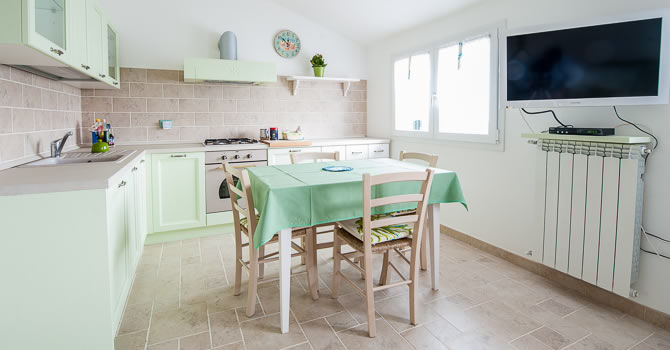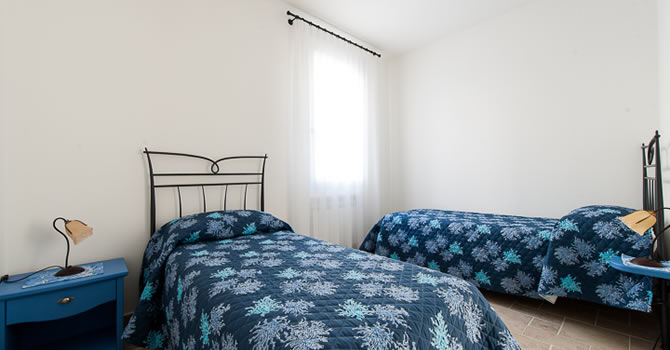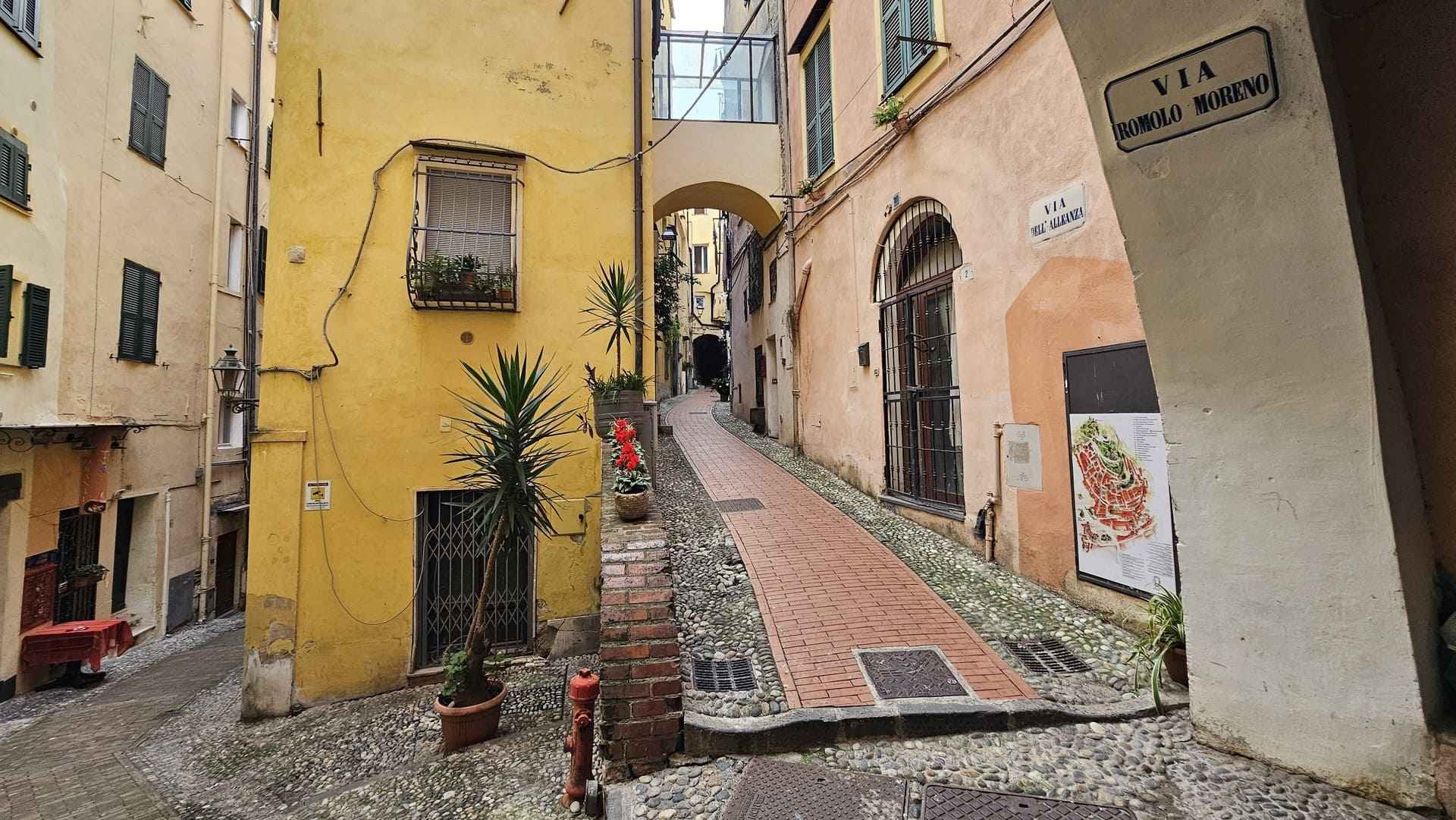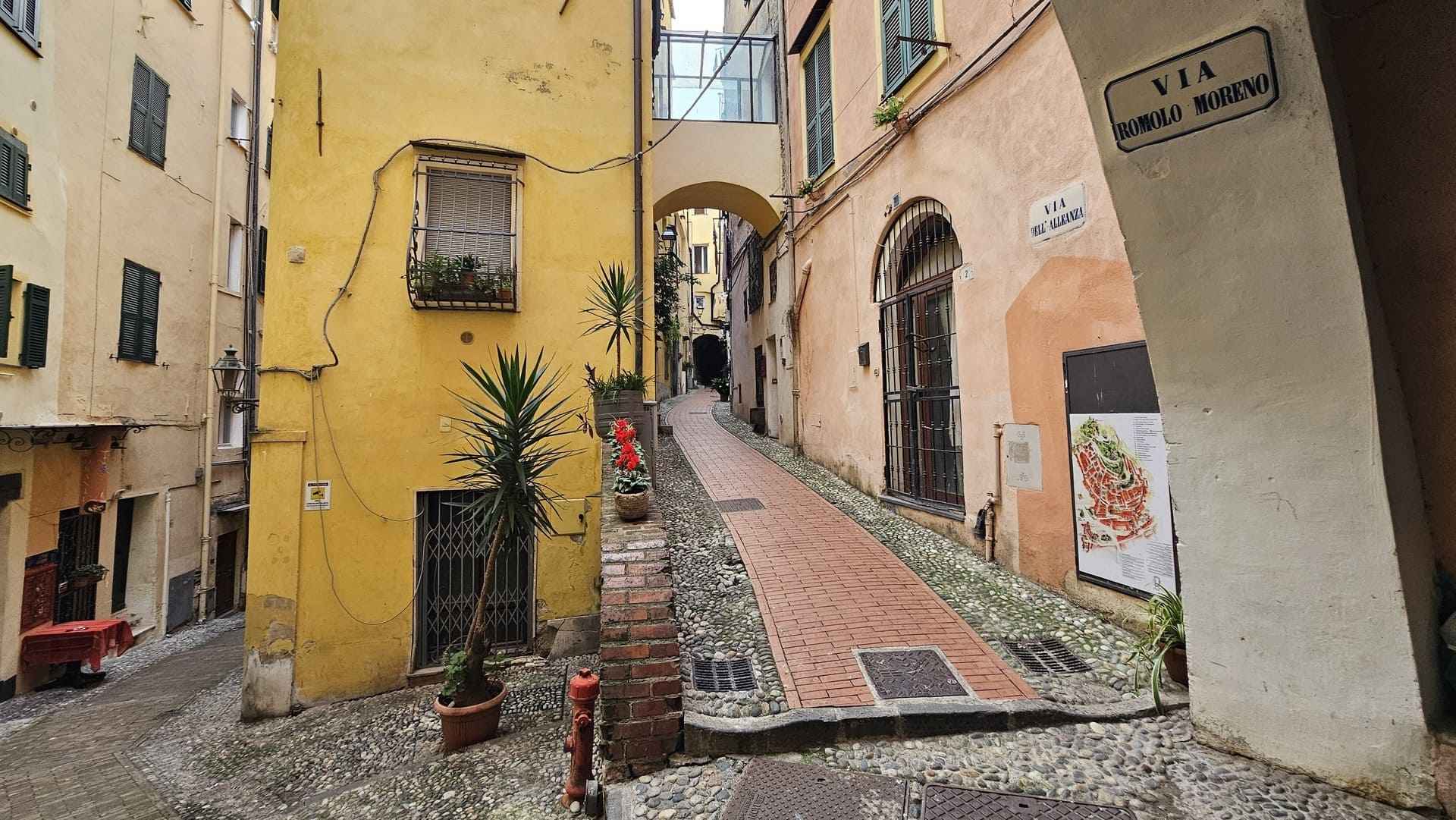
Villages of Liguria
Visit to Pigna and the hamlet of Buggio: discovering hillside villages
October 29, 2023
Nestled in the hills of the province of Imperia are the village of Pigna and the picturesque hamlet of Buggio. Two places capable of capturing the true essence of Ligurian hillside villages, with their narrow streets and stone houses: small towns where time passes slowly.
So let's explore the art, history and beauty that characterize this destination located on the Riviera di Ponente.
How to get to Pigna
To reach the town of Pigna, located 80 km from Agriturismo Le Girandole (discover our farmholidays in Diano Marina), you need to take the A10 highway, which connects the coastal area to the city of Ventimiglia, and then head towards Vallecrosia. From here, you will need to follow provincial highway No. 64 until you reach Pigna.
The drive from Valle Crosia to Pigna is about 20 km long and involves curves and climbs, as you move away from the coast and up into the Ligurian hinterland. The most convenient parking is along Corso de Sonnaz, from where you can begin exploring the village.
What to see in Pigna
Arriving in Pigna, you will be greeted by a mountainous landscape surrounded by woods and forests, typical of the area. At the entrance to the village, some signs provide a brief overview of the history of the village.
Pigna is located about 280 meters above sea level and is part of the Ligurian Alps Regional Nature Park, a protected area of about 6,000 hectares. This park is home to several Special Areas of Conservation (SACs) and Special Protection Areas (SPAs), which protect habitats and botanical and wildlife species of high environmental value.
In Pigna you can visit the historic center with the 15th-century municipal loggia, the parish church of San Michele with its polyptych by Giovanni Canavesio and stone rose window, the Ethnographic Museum "The Land and the Memory," the frescoed church of San Bernardo, and the 13th-century Sanctuary of Madonna di Passoscio.
In addition, you can enjoy local delicacies such as the Slow Food Presidium white bean and Buggio's characteristic gran pistau.
For nature lovers, Pigna offers spectacular hiking trails leading to the peaks of Mounts Grai, Toraggio and Pietravecchia, often described as the "little Dolomites of Liguria." Don't miss Mount Saccarello, the highest peak in Liguria at 2,200 meters above sea level, with its rhododendron blooms, the beech forest of the Rezzo forest, the Gerbonte forest, and the Torraggio-Pietravecchia mountain group, where endemic botanical species such as Lilium pomponium grow. Not to be outdone are the Navette larch grove on the Piedmont border and the Gouta-Testa D'Alpe fir forest, authentic naturalistic gems all to be explored.
Piazza Castello
To reach Piazza Castello, in the maze of Pigna's characteristic inner caruggi, one passes through an architectural structure similar to those found in the surrounding villages and hinterland. The name "Piazza Castello" is not accidental; in ancient times, the town's castle, built between the 12th and 13th centuries by the Counts of Ventimiglia, stood here.
The square is distinguished by its width, surrounded by the dwellings that developed around the castle. It is known locally as "la Cola" and offers a beautiful view of Castel Vittorio.
This square is the ideal stage for summer performances in the vernacular, as part of the Intemelia Poetry and Comedy Festival. Since 1960, the town has also boasted the presence of the "San Michele" philodramatic company.
From the square, there is a fascinating view of Castelvittorio and, above all, of the famous Baths of Pigna. These baths tell a part of Italy's history, a story of decline and abandonment. They had been declared bankrupt and auctioned for 20 millions, but were eventually sold to Russian entrepreneurs for 4 millions. However, the story of these spas continues, and their future is yet to be written.
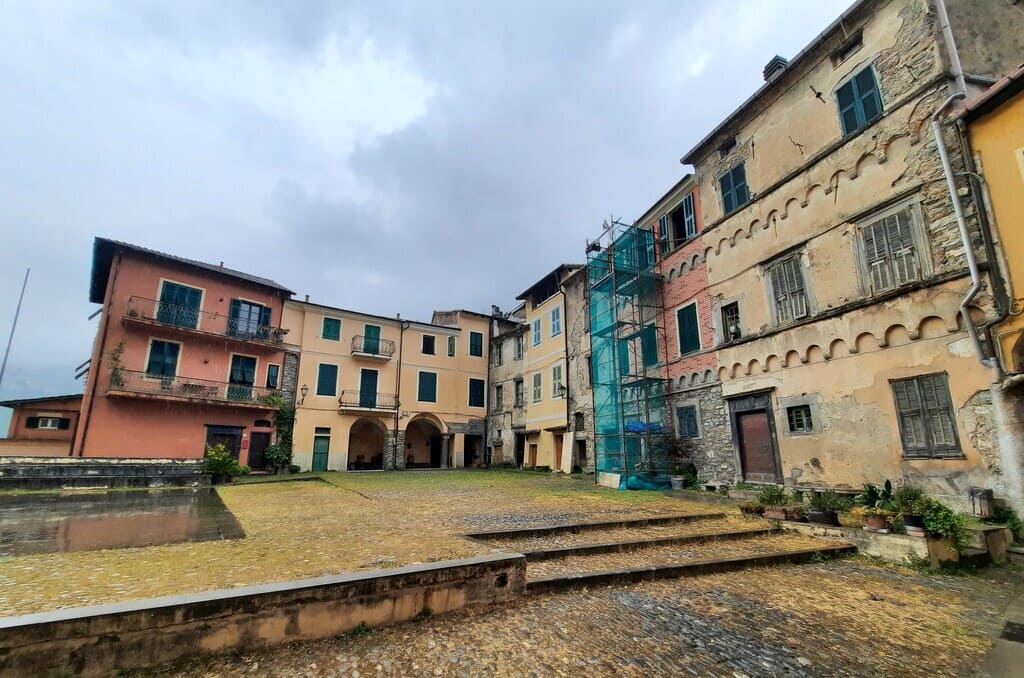
The Medieval Loggia
From Castello Square, our route took us to an authentic historical gem of Pigna: the Medieval Loggia. This building is located in what was once the heart of the village's social life, the Piazza Vecchia.

An informational sign in the Piazza Vecchia reveals part of Pigna's history. Like the other municipalities in the county of Nice, Pigna enjoyed considerable autonomy governed by the statutes of 1575. The municipal administration was under the jurisdiction of a sworn parliament, composed of a council of twelve (two mayors and ten councilors) and 28 esteemed members. The composition of this body was renewed annually on the feast of St. Michael. In the Old Square, in front of the town hall, the heads of families were required to attend all meetings of the town parliament, especially during the celebrations of St. Michael, May 1 and All Saints' Day.
Around Pigna passing through the medieval loggia
St. Michael's Parish Church
A short distance from the Medieval Loggia, we find the Parish Church of St. Michael. This building has roots in the 11th century and features a façade with a pseudo-protruding portal, adorned with a statue of St. Michael and a marble rose window. Inside, the church shows three different building phases, highlighted by the round, octagonal columns and the 17th-century extension. The bell tower, square in plan, follows a style typical of the Maritime valleys.
Inside the church, it is possible to admire the famous polyptych by Giovanni Canavesio, the same painter who decorated the Church of San Bernardino in Triora.
Next to the parish church of San Michele is the Oratory of St. Anthony Abbot.
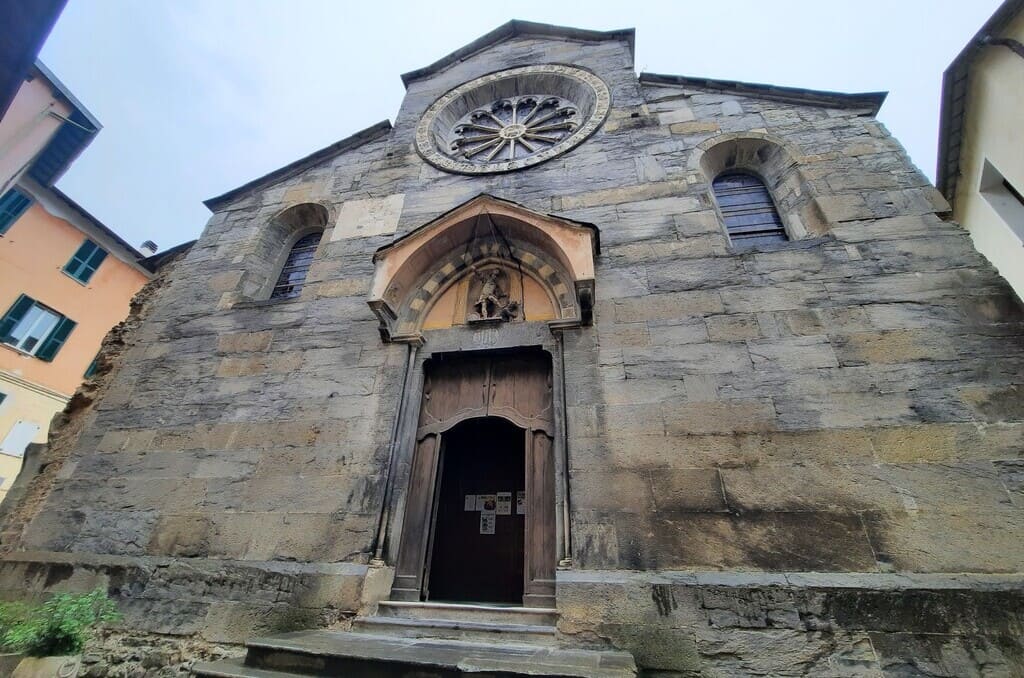
Piazza XX Settembre
After exploring the Church of San Michele, we headed to Piazza XX Settembre, from which it is possible to return to the parking lot. Not far from this square is the Ethnographic Museum "La Terra e la Memoria," which we will reserve for a future visit, perhaps in conjunction with a tour of Castelvittorio.
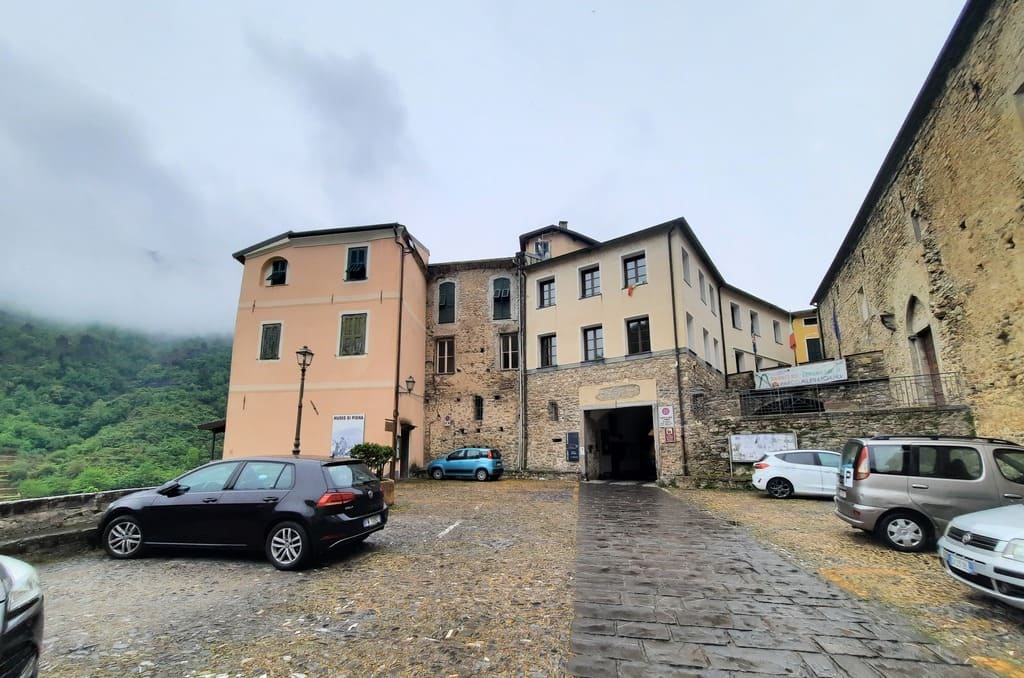
Discovering the hamlet of Buggio
After visiting Pigna, you can explore Buggio, the only hamlet of Pigna. Located at 446 meters above sea level, this charming hamlet in the upper Nervia Valley is renowned for its historical and architectural features, as well as its traditional annual chestnut festival held in October.
A walk in Buggio
The visit to Buggio began from Via Sperun, which leads gradually into the village. Immediately striking is the quiet atmosphere and an almost total absence of human presence. Many of the dwellings may appear uninhabited, suggesting the possibility that, over the next few decades, Buggio may take on the appearance of an abandoned hamlet.
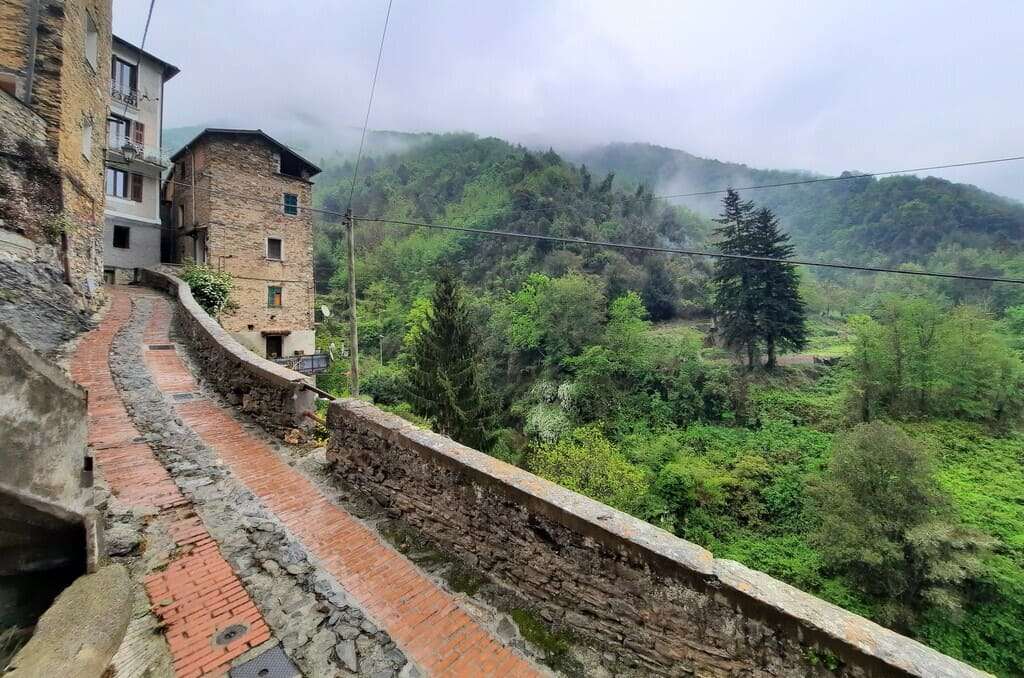
Nevertheless, the surrounding landscape proves fascinating. The wide stone arches offer spectacular views of the majestic mountains and surrounding forests. At the highest part of the hamlet, there is Via Burga and a small square, from which sprout directional signs for those on foot or bicycle. Toward the north, a path opens up to the Tenarda Dam and Melosa Hill, while to the south, we find the path to Pigna and Prealba.
The small square of Buggio is manned by the imposing Parish Church of St. John the Baptist, a religious building dating from the 16th century that is distinguished by its Baroque style. Inside the church, several statues carved in fine Carrara marble can be admired, further enriching its beauty.

Listen to all podcasts published on our official channels:
